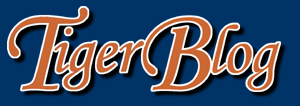There’s little doubt that the Tigers pitching staff disappointed in 2008. The Tigers 4.91 ERA was the twelfth best in the American League and while the 644 walks they gave up didn’t help, they also gave up 1,541 hits, which was eleventh best in the American League. In 2006, when they led the league with a 3.84 mark, they only gave up 1,420 hits. That’s a full 121 less then 2008. While some of that can be piled on the pitchers, the fact that the Tigers led the league in defensive efficiency in 2006 (.704 versus league average of .688 that year) and finished with a below average .686 defensive efficiency in 2008 (.691 was average) also has something to do with it.
Fortunately, the Tigers defense should get better in 2009. How much better do you ask? Well, we’ll focus on the left side of the infield and we’ll use a couple of different fielding metrics to figure out how much help is on the way.
First we’ll take a look at the Baseball Prospectus stats. Here’s a look at the Tigers who got time at third base in 2008 (the numbers represent fielding runs above a replacement level player adjusted for that season):
Carlos Guillen – 14 runs in 89 games
Brandon Inge – 10 runs in 51 games
Jeff Larish – 1 run in 12 games
Ryan Raburn – 0 runs in 18 games
Mike Hessman – 2 runs in 12 games
Ramon Santiago – -1 runs in six games
Mike Hollimon – 0 runs in two games
I know that doesn’t add up to 162 games, but it’s because some games had multiple third basemen. Anyway, if you add up all of those numbers you come with 26 runs. In 2006 Brandon Inge played 159 games at third and he logged 36 runs above replacement. That’s pretty good for a third baseman because the American League gold glove winner at third base had 28 that year (and for that matter, Chavez never finished with a higher mark then 30). That’s a ten run difference and while it’s not an exact science, ten runs usually equal about one win.
Now lets look at shortstop:
Edgar Renteria – 19 runs above replacement in 138 games
Ramon Santiago – 3 runs above replacement in 33 games
Mike Hollimon – 0 runs above replacement in 6 games.
Here’s where it gets a little tricky. The Tigers 2008 total was 22 RAR. That’s not good. In fact it’s below average. Now the question is, how do we value Everett. The last time he played a full season was 2006 and he had an outstanding season with 40 FRAR. To put this in perspective, Omar Vizquel, who’s touted as probably the second best fielding shortstop of all time, never had a season above 35 FRAR. In 2007, Everett had 12 FRAR in 66 games in an injury marred season and then in 2008, he had 16 in only 44 games as a reserve.
So let’s do some back of the envelope math. For Everett to get to 40, he’d have to have another outstanding season. In 2007, it’s not out of the realm of possibility that he would have gotten to 30 had he played a full year and then if you look at 2008, he could have fallen in the 35+ range if he had gotten to play every day. So let’s keep it simple. 32 isn’t out of the realm of possibility and it keeps the math simple because once again, Everett is 10 runs better then the Tigers compliment in 2008. That’s another win so if you use my sweet and simple method, the Tigers should be two wins better in the field with Inge and Everett at third and short respectively.
This also assumes that Inge and Everett play the entire year. For Inge, this is possible because he’s done it in the past few years. Everett hasn’t played a full season since 2006 so then the question is, how will Ramon Santiago, who would probably get those missed games, play in his place. While Ramon Santiago is a solid fielder, he’s not gold glove quality so the more games Everett misses, the more that the two game advantage will get chewed into.
The fielding measure I also like to look at is the +/- version that John Dewan created for his The Fielding Bible–Volume II. While this doesn’t give us a nice clean run or win number like FRAR does, it should help validate our findings above. The first volume of the Fielding Bible has 2003 through 2005 +/- figures and the short explanation of the figure is how many more plays that fielder made above what an average fielder at his position would have gotten too. For 2006 through 2008, you can find the numbers at Bill James Online. Keep in mind that we’re now talking about an average player and not a replacement player.
Anyway, using the Fielding Bible figures, Adam Everett is a stud. He led all of baseball in +/- in every year from 2003 through 2006. Even with the injury marred 2007, he still finished sixth and there wasn’t enough data to give him a rating in 2008. One interesting thing to note about Everett is, his numbers going to his right have come down considerably (from very good to just above average). Going to his left, he’s still great even if you just look at 2007. In 2008, Renteria was the 28th best fielding shortstop with a -9 ranking. He was good going to his left (but not nearly as good as in year’s past) and he was still bad going to his right.
At third base, Carlos Guillen was the 26th best fielding third baseman with a -8 rating. Inge was the second best third baseman in both 2006 and 2007 with a +27 and +22 rating respectively. Fortunately, Inge’s strength is going to his right so that should make up for any diminshed range that Everett has going to his right.
So again, let’s do some back of the envelope math. If you add Guillen and Renteria’s figured together we get -17. If Inge gets to +20, it’ll still be a good year and even Everett slides a touch and plays a whole year at +20 (his worst figure from 2003 through 2006 was +21, his best was +41 in 2006). That’s 67 plays more that you’ll see from Inge and Everett then you got from Guillen and Renteria. That’s more then one play every three games and while that doesn’t sound like a lot, I bet if you asked the pitchers, they’d definitely take it.
So there you go. Two measures and both show a big improvement. And that’s only two slots. Guillen should be an upgrade over the left field revolving door last year and something that went under the radar was that Curtis Granderson didn’t have as good of a year in the field as he did in 2007 or 2006. If both of those guys improve their positions, then it’ll just get better for the pitching staff.
Post a comment
- Baseball Historians
- Tigerblog
- 1984 Tigers Site
- 1968 Tigers Site
- Baseball Book Blog
- 1967 AL Pennant Race
- All Star Game Blog
- Reds Cutting Edge
- Black Sox Blog
- The Gas House Gang
- Tom Seaver Fan Club
- Baseball's Savior
- Dem Bums (Dodgers)
- Liberty Ball
- Angelblog
- The Curse of Wrigley Field
- Earl Weaver Rules
- Metrodome Memories
- Fenway Fables
- Braves Baseball Blog
- Pirates Journal
- Yankees History
- Indians Journal
- Giantsblog
- Fremont Bound
- Colt 45s Blog
- Marlins Journal
- Devil Rays Blog
- Blue Jays Journal
- National Record
- Mariner Monitor
- The Padre Post
- The Brewer Chronicles
- Rockies Register
- Diamondback Journal
- Ranger Reporter
- Royalsblog

Show the love! Pick up your very own TigerBlog coffee mug or other item from the TigerBlog Store today!
- April 2020
- July 2013
- April 2013
- March 2013
- February 2013
- January 2013
- November 2012
- August 2012
- July 2012
- June 2012
- May 2012
- April 2012
- March 2012
- February 2012
- January 2012
- December 2011
- November 2011
- October 2011
- September 2011
- August 2011
- July 2011
- June 2011
- May 2011
- April 2011
- March 2011
- February 2011
- January 2011
- December 2010
- November 2010
- October 2010
- September 2010
- August 2010
- July 2010
- June 2010
- May 2010
- April 2010
- March 2010
- February 2010
- January 2010
- December 2009
- November 2009
- October 2009
- September 2009
- August 2009
- July 2009
- June 2009
- May 2009
- April 2009
- March 2009
- February 2009
- January 2009
- December 2008
- November 2008
- October 2008
- September 2008
- August 2008
- July 2008
- June 2008
- May 2008
- April 2008
- March 2008
- February 2008
- January 2008
- December 2007
- November 2007
- October 2007
- September 2007
- August 2007
- July 2007
- June 2007
- May 2007
- April 2007
- March 2007
- February 2007
- January 2007
- December 2006
- November 2006
- October 2006
- September 2006
- August 2006
- July 2006
- June 2006
- May 2006
- April 2006
- March 2006
- February 2006
- January 2006
- December 2005
- November 2005
- October 2005
- September 2005
- August 2005
- July 2005
- June 2005
- May 2005
- April 2005
- March 2005
- February 2005
- January 2005
- December 2004
- November 2004
- October 2004
- September 2004
- August 2004
- July 2004
- June 2004
- May 2004
- April 2004
- March 2004
- February 2004
- January 2004
- December 2003
- November 2003
- October 2003
- September 2003
- August 2003
- July 2003
- June 2003
- May 2003
- April 2003
- 1911 Tigers (1)
- 1935 Diary (141)
- 1968 Tigers (4)
- 1984 Diary (162)
- 1984 Tigers News (2)
- 2004 Tigers (105)
- 2005 Tigers (208)
- 2006 American League Championship Series (ALCS) (8)
- 2006 American League Division Series (ALDS) (8)
- 2006 Tigers (166)
- 2006 World Series (9)
- 2007 Tigers (422)
- 2008 Tigers (211)
- 2009 Tigers (212)
- 2010 American League Central (1)
- 2010 Tigers (165)
- 2011 Tigers (130)
- 2012 Tigers (28)
- 2013 Tigers (7)
- April Fools (8)
- Baseball Bat (1)
- Baseball Cards (3)
- Baseball Equipment (1)
- Baseball Historians (3)
- Baseball Tickets (1)
- Book Reviews (2)
- Burn Notice (3)
- Debate (15)
- Former Tigers (9)
- Historical Perspectives (5)
- Mark Fidrych Tribute (1)
- Season Lookbacks (5)
- Tiger Stadium (7)
- Tiger Trivia Challenge (13)
- Tigers Corner (1)
- Tigers History (21)
- Tigers Tickets (1)
- Uncategorized (338)
WordPress



Will the gains on defense outweigh the loss on offense of having the Inge / Everett tandem batting 8 and 9? Renteria had that brutal stretch at the plate in the middle of the season, but overall his offensive statistics were at least average. Everett could be another Inge at the plate (without Inge’s power).
--Posted by wade on January 20th, 2009 at 7:48 am